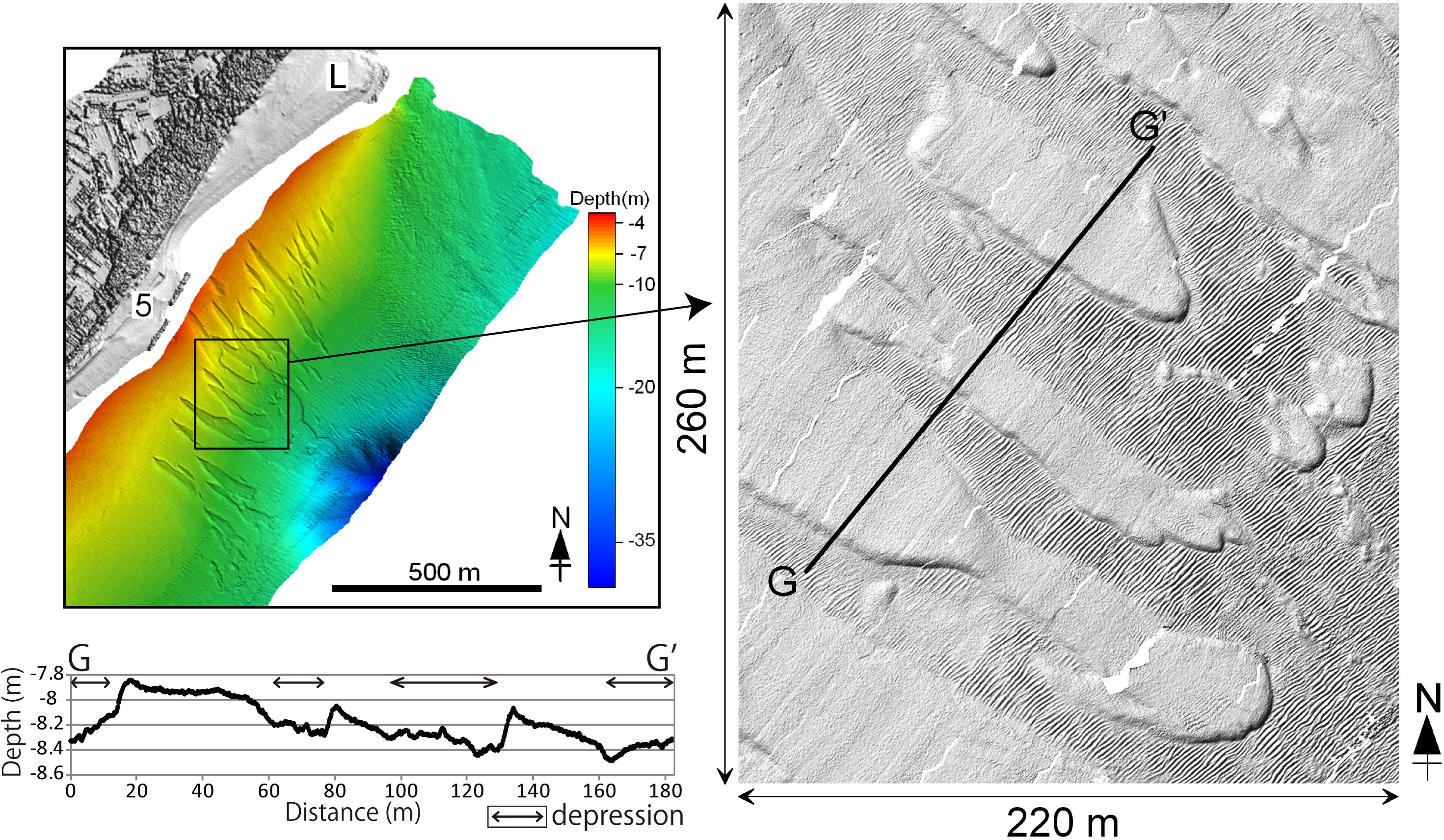JAMSTEC > Research Institute for Value-Added-Information Generation (VAiG) > Center for Mathematical Science and Advanced Technology (MAT) > Member > Shuro Yoshikawa
Members
Shuro Yoshikawa
Postdoctoral Researcher
Japan Agency for Marine-Earth Science and Technology
Center for Mathematical Science and Advanced Technology
3173-25, Showa-machi, Kanazawa-ku, Yokohama-city, Kanagawa, 236-0001, Japan
s-yoshikawa
Short CV
Specialty: Sedimentology, Geomorphology, Marine Geology
Employment
| 2008.4 - 2009.3 | Postdoctoral Researcher at Tokai Univ. |
| 2009.4 - 2010.3 | Postdoctoral Researcher at Geological Survey of Japan, AIST |
| 2010.4 - 2012.10 | Postdoctoral Researcher at Atmosphere and Ocean Research Institute, Univ. of Tokyo |
| 2012.11 - 2014.3 | Postdoctoral Researcher at Application Lab., JAMSTEC |
| 2014.4 - | Current Position |
Education
| 2008. 3 | DSc. degree at Graduate School of Science and Technology, Tokai University |
Award
| 2014. 3 | Best Talk Award, Sedimentological Society of Japan |
| 2016. 3 | Best Paper Award, Sedimentological Society of Japan |
Research Topics
- Storm-generated sediment transport and geomorphological process
- I study modern sedimentary and geomorphological processes induced by storms at the nearshore zone along the Shimizu coast, Suruga Bay facing the Pacific Ocean, Japan, mainly based on the results of bathymetric survey, shallow seismic survey, and sampling of bottom sediments.

Bathymetry in February 2007 off Shimizu Coast, northwestern part of Suruga Bay, Central Japan (modified after Yoshikawa and Nemoto, 2014; Marine Geology). Numbers 5 and ‘L’ indicate headlands. Linear topographic high (sand ridge) and adjacent bathymetric depressions develop towards offshore. Long, straight-crested ripples occur widely in the seafloor depressions. Repeated bathymetric and coastal topographic survey, analysis of bottom materials, and shallow seismic survey suggest that the sand ridges are formed by storm-generated offshore-directed sediment transport towards submarine canyon immediately after the generation of the 2D bedforms during the storm.
- Sediment transport during the 2011 Tohoku-oki earthquake
- I’m interest in the sediment transport from nearshore to deep seafloor caused by tsunami and seafloor shaking during the large earthquake. Ongoing geological research into the processes that operate on the shallow seafloor, i.e., the transitional zone between land and deep seafloor, is vital to our understanding of modern tsunami-generated sediment transport. To clarify the seafloor erosion by the 2011 tsunami and formation of shallow marine tsunami deposits, shallow seismic survey and vibracoring are conducted at the Sendai Bay, Japan. In addition, sediment sorting process during tsunami run-up is examined by flume experience.
- Development of Optic Sediment Sensor (OSS)
- We develop a monitoring system that can detect the detailed processes of change in bathymetry and suspended sediment concentration at shallow seafloor during storms. The system consists mainly of four components: 1) an array of optic sediment sensors (OSSs); 2) a support structure (steel pipes); 3) an electronics unit that transmit and receive the LED through the optic fiber cables; and 4) a digital data acquisition system. The present system probably provides new insight for study on storm-generated sediment transport at surf zone.
- Development of a cone penetration tasting (CPT)
- To construct assessment method for stability of seafloor and subsurface sediments, we develop a CPT that can easily measure the shear strength of the sediments. We will try to conduct mapping of the physical property of seafloor sediments extensively around Japan, to understand the distribution of vulnerability of the sediments. The effort probably contributes to research on submarine land slide.
Publications
Original Publications (Peer-Reviewed)
- “Small-scale spatial variation in near-surface turbidites around the JFAST site near the Japan Trench”, Yoshikawa, S., Kanamatsu, T., Kasaya, T., Geochemistry, Geophysics, Geosystems, doi:10.1002/2015GC006114 (2016).
- “Evidence for erosion and deposition by the 2011 Tohoku-oki tsunami on the nearshore shelf of Sendai Bay, Japan”, Yoshikawa, S., Kanamatsu, T., Goto, K., Sakamoto, I., Yagi, M., Fujimaki, M., Imura, R., Nemoto, K., Sakaguchi, H., Geo-Marine Letters, 35, 315-328 (2015).
- “Development of a fiber-optic cable monitoring system for storm-generated bathymetric change in the surf zone”, Yoshikawa, S., Sakaguchi, H., Akutagawa, S., Machijima, Y., Zhao, Y., Coastal Engineering Journal, Vol. 57, No. 2, 1550004 (17 pages) (2015).
- “Examination of volcanic activity: AUV and submersible observations of fine-scale lava flow distributions along the Southern Mariana Trough spreading axis”, Asada, M., Yoshikawa, S., Mochizuki, N., Nogi, Y., Okino, K., Subseafloor Biosphere Linked to Global Hydrothermal Systems; TAIGA Concept, 469-478 (2015).
- “Brief report of side-scan sonar imagery observations of the Archaean, Pika, and Urashima hydrothermal sites”, Asada, M., Yoshikawa, S., Mochizuki, N., Nogi, Y., Okino, K., Subseafloor Biosphere Linked to Global Hydrothermal Systems; TAIGA Concept, 479-487 (2015).
- “The role of summer monsoon-typhoons in the formation of nearshore coarse-grained ripples, depression, and sand-ridge systems along the Shimizu coast, Suruga Bay facing the Pacific Ocean, Japan”, Yoshikawa, S., Nemoto, K., Marine Geology, 353, 84-98 (2014).
- “Discovery of a new hydrothermal vent based on an underwater, high-resolution geophysical survey”, Nakamura, K. Toki, T., Mochizuki, N., Asada, M., Ishibashi, J., Nogi, Y., Yoshikawa, S., Miyazaki, J., Okino, K., Deep-Sea Research I, 74, 1-10 (2013).
- “Geomorphological variations at hydrothermal sites in the southern Mariana Trough: relationship between hydrothermal activity and topographic characteristics”, Yoshikawa, S., Okino, K., Asada, M., Marine Geology, 303-306, 172-182 (2012).
- “Seasonal variations of sediment transport to a canyon and coastal erosion along the Shimizu coast, Suruga Bay, Japan”, Yoshikawa, S., Nemoto, K., Marine Geology, 271, 165-176 (2010).
